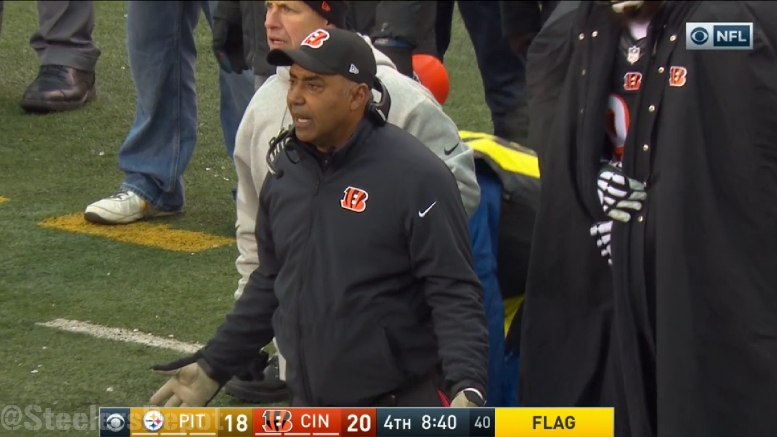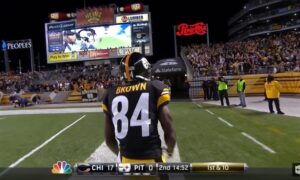It wouldn’t be a true rivalry game between the Pittsburgh Steelers and the Cincinnati Bengals without a bevy of penalties, and both sides of the ball certainly did their part in trying to sabotage themselves. The Steelers were their own worst enemy in the first half, but Cincinnati proved to have the topper, unraveling late to aid Pittsburgh to an easier victory—and a season sweep.
Between the two teams, there were 15 total penalties that rattled off nearly 200 yards combined. The Steelers had seven of the penalties, but most of the yardage, as they afforded the Bengals 104 yards’ worth of real estate just via their infractions on both sides of the ball. And boy were they costly early.
Just three of them came in the first half, but all three were critical. It started with a facemask penalty on Stephon Tuitt on a third-and-seven play that resulted in a sack and what should have been a three-and-out on the Bengals’ opening drive.
Instead, it gave them 15 yards and a jumpstart that they took all the way down to the Steelers’ five-yard line before the defense finally made the necessary stop and held them to a field goal. But that was just the beginning of the troubles.
On the Bengals’ second offensive possession, Andy Dalton looked for the end zone on a first-down play from 40 yards out, but rookie cornerback Artie Burns committed an unnecessary pass interference penalty that gave Cincinnati a free 39 yards and a first and goal at the one.
The defense nearly stood up once again, as they have a few times recently at the goal line, stuffing Jeremy Hill on the first three downs—including two stops by Lawrence Timmons—but Dalton was able to sneak in on fourth down to kill their momentum.
Late in the first half, the Bengals aided a Steelers drive with a taunting penalty after a 10-yard run that moved the ball from the Cincinnati 41 to the 16. But later in the drive, on third and seven, a touchdown pass from Ben Roethlisberger to Antonio Brown was taken off the board when Le’Veon Bell was flagged for a chop block. They had to settle for a field goal, meaning those penalties directly cost them, at minimum, seven points.
Early in the second half, the offense actually escaped adversity after Marcus Gilbert was flagged for a foolish unnecessary roughness penalty, turning third and two into third and 17, when Roethlisberger found Ladarius Green for 23 yards.
Later on the drive, Vontaze Burfict was flagged for unnecessary roughness, but then David DeCastro was docked for a false start on third and six from the 17, helping contribute for their settling for a field goal.
DeCastro added a hold on first and 10 from the Bengals’ 19 in Pittsburgh’s next drive that helped contribute to settling for yet another field goal, but in the Steelers’ next possession, the Bengals committed a foul on four consecutive plays.
The first was an offside penalty on third and one. Dre Kirkpatrick was then flagged twice in a row for defensive holding, and finally, Pat Sims added an unnecessary roughness penalty to put the ball on the 18. The Steelers got their lone touchdown two plays later.
Kirkpatrick added a pass interference penalty at the end of the game on Brown in the end zone that gave the Steelers first and goal, but which allowed them to run out the clock to seal the win, showing that the narrative of penalties ran throughout the course of the entire game.








